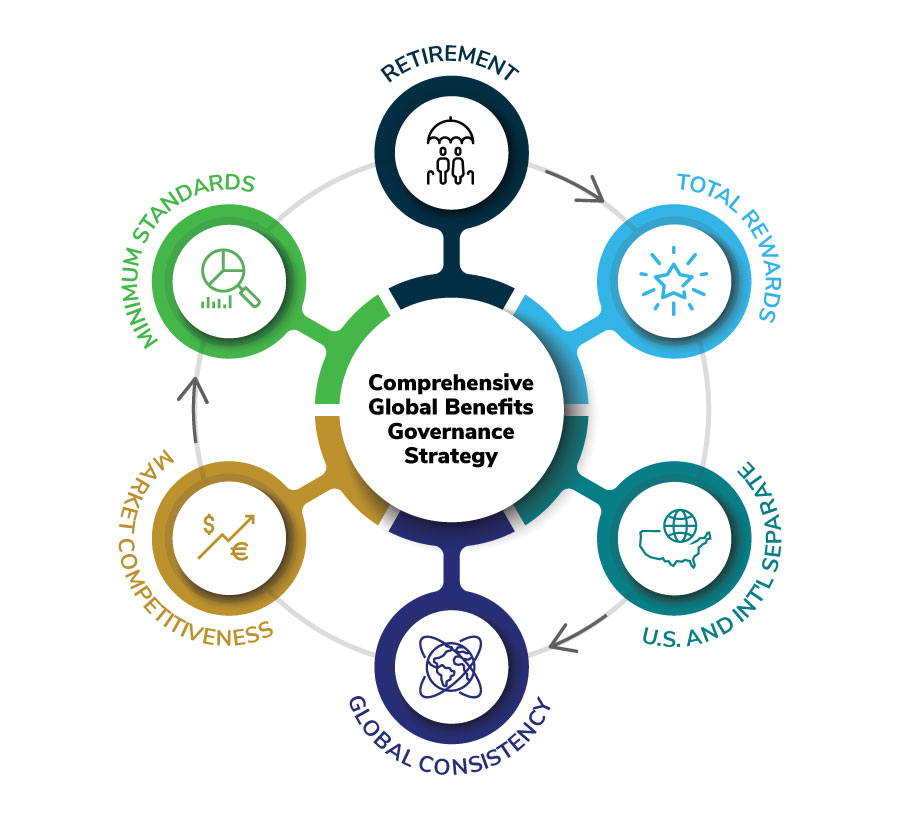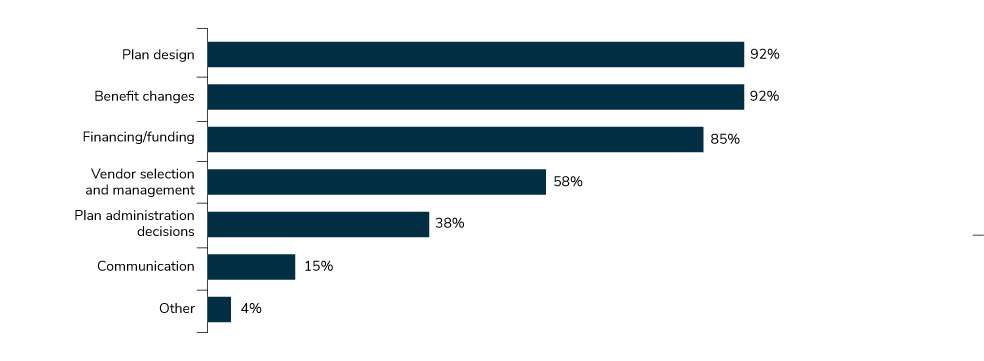April 21, 2022
The large employer approach to global benefits governance strategy has become more comprehensive, largely due to philosophical shifts. A majority of companies started with a focus on retirement plans, which has evolved to include risk and medical benefits as well as leave, well-being and allowances based on company priorities. Leading multinationals are shifting from separate strategies for U.S. and international benefits to a single global benefits strategy to provide greater consistency for benefits across their organizations. Furthermore, the COVID-19 pandemic has exposed gaps in benefit offerings and has shifted the focus from market median competitiveness to ensuring that there is a minimum floor of benefits to meet the employer’s critical workforce needs. As the talent pool tightens, companies are evaluating what benefits they will retain to attract employees in a sustainable manner and meet their business strategy needs. These influences and demands have led to a more thorough and inclusive global strategy (Figure 1).
As companies build out their strategy, they should keep in mind four key components outlined in Table 1:

Table 1: Four Key Components of Governance Strategy
| Vision |
|---|
| Vision incorporates the mission statement and objectives to summarize what is crucial to keeping an employer’s global strategy concise and relevant to its business strategy need. |
| Guiding Principles |
| What are the key benefit variables that are most important to an employer’s strategy to guide the plan design and administration efforts? Examples include competitiveness, compliance, cost, consistency, culture (both company and country), benefits coverage, shared responsibility, equity, data privacy and security, flexibility and personalization, simplicity and value proposition. |
| Benefit Scope |
| Given limited resources, employers should determine what benefits need global oversight and what makes more sense for local ownership. Examples include retirement, risk benefits, medical, leave, allowances, virtual solutions, fertility and well-being initiatives. |
| Essential Governance Elements |
| What core elements are incorporated into the governance process? Examples include plan design, benefit changes, funding, plan administration decisions, vendor selection and management. Figure 2 shows the prevalence of governance elements among global companies’ efforts. |

Source: Global Benefits Governance Survey 2021
What Should Employers Keep in Mind when Building Their Strategy?
There are two pitfalls to avoid when developing a global benefits strategy: transplanting a U.S.-centric strategy across the globe and not shifting global benefits strategy to align with global business strategy. A successful global benefits strategy should focus on a broad core roadmap that can be adapted and adjusted to meet local business and workforce needs. Typically, global benefits strategy is reviewed less often than global business strategy; therefore, companies that adapt to meet business needs more quickly find more success and have a seat at the leadership table.
Global Broker
Employers should share their strategy with their global brokers to ensure that all parties are aware of what is important to organizations as they go through the governance process.
What Strategy Makes the Most Sense for a Company?
Employers should ask several key questions as they evaluate their governance strategy:
- Does the company have a clearly stated benefits strategy?
- Is the strategy applied globally? What is the rationale for how it is applied?
- How has the overarching strategy been applied to the company’s business goals and objectives?
- Are there mechanisms in place to ensure that global consistency is being integrated into the governance process?
How Do Employers Incorporate Global Consistency?
To successfully address gaps in benefits and manage the race to attract and retain talent, it is crucial that companies understand what is important to their global organization and determine how they can be consistent across their global locations. This means building minimum standards and an inclusive design that reflects their workforce’s diverse needs and thoughtful integration of other related global strategies (e.g., global financing mechanisms, global mobility).
Global benefits governance has become more sophisticated over the past 14 years as companies strive to become global entities. Developing the vision, guiding principles, benefit scope and essential elements will help build a more complete strategy. Tying the governance strategy to overarching business strategy and applying an equitable lens will bring a company more success with its governance process.
More Topics
Articles & Guides
This content is for members only. Already a member?
Login
![]()
